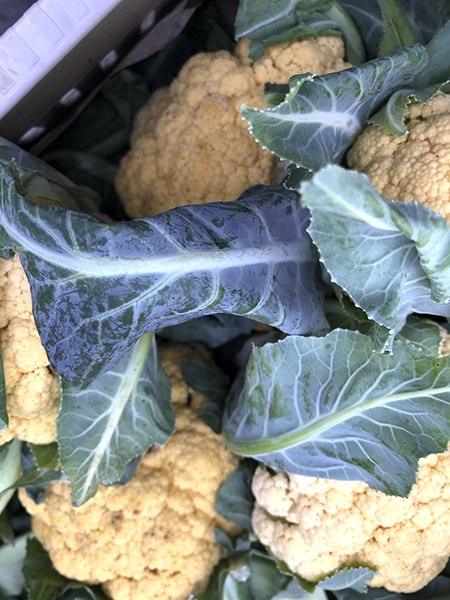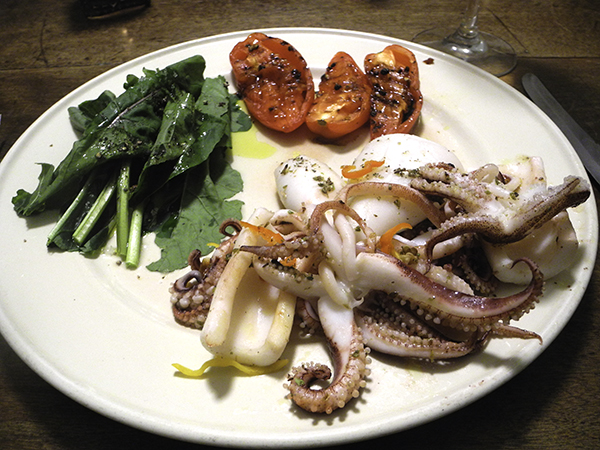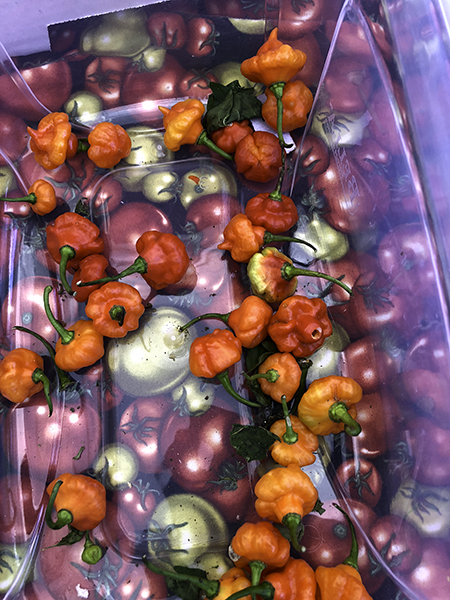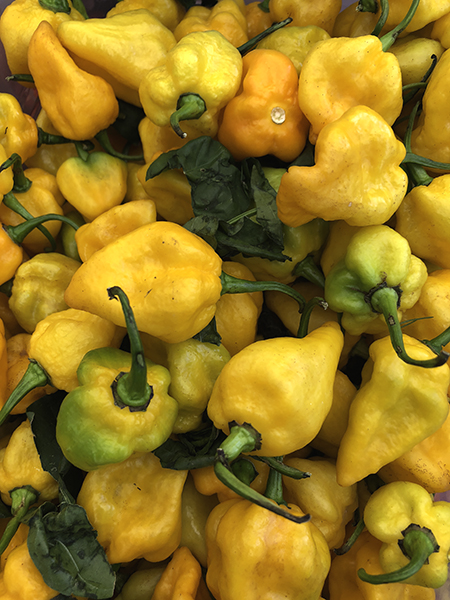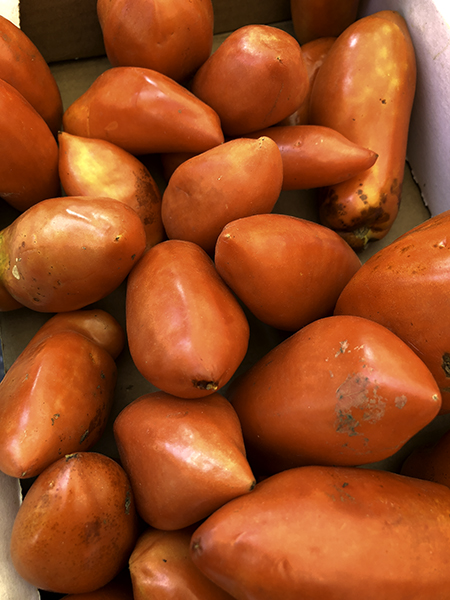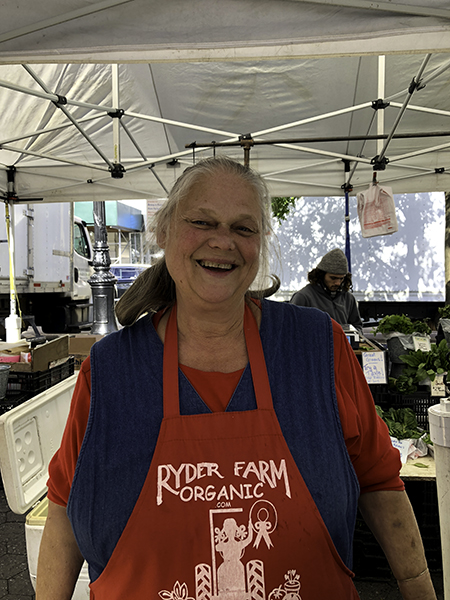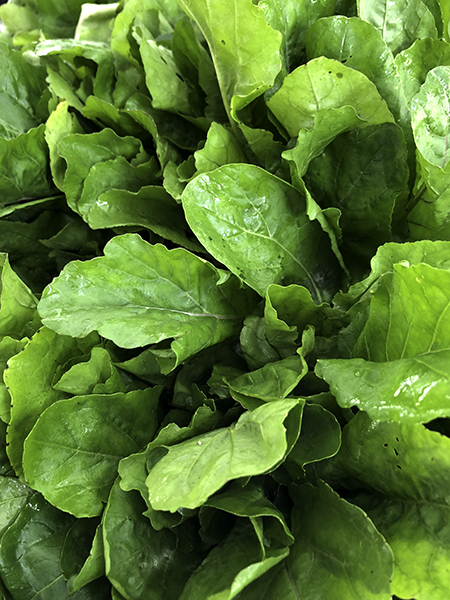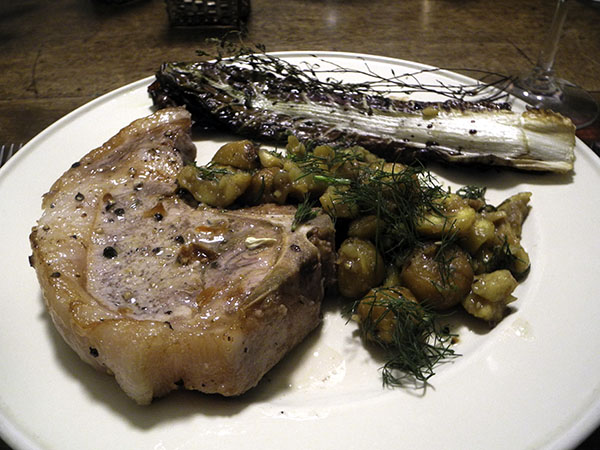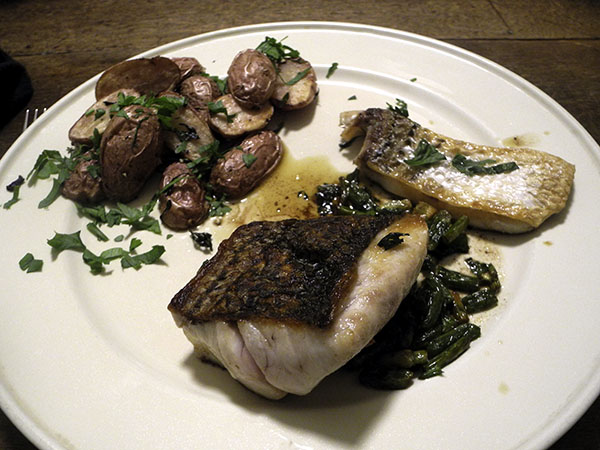
When things go well in the kitchen. But not necessarily perfectly.
It was a really delicious dinner, although it wasn’t quite the dinner I had intended.
I thought it would end up looking more bright green than brown-green. I think I’ve pretty much gotten the crispy fish skin technique down, but now I have to know when to stop, or at least turn down the flame at the right time.
I’d say that the fish itself was superb, and cooked à point, which is an expression usually applied, in this country at least, only to steaks, an impreciseness which fits nicely with the meaty appearance of the bass fillets this time. Even the sauce was really tasty, in spite of having taken on a bit of an unintended brown butter effect.
In an earlier post I wrote that ‘the technique’ is from a page I found on line, ‘Perfect Seared Fish‘, written by Hank Shaw, who describes himself as a former line cook, but who is much more than that.
I didn’t have any micro sorrel or shallot blossoms this time, so I improvised a substitution for the main ingredient of the sauce: garlic scapes and celery stem and leaves, and I held the garnish. I think the decision worked out perfectly, except, maybe, for the brown part.\
- one 14-ounce striped bass fillet from Pura Vida Seafood Company, removed from the refrigerator, the thick and the thin sections each halved, salted just a little, allowed to rest at room temperature for 20 minutes, then the skin side scraped with a butter knife to remove excess moisture, both sides patted dry afterward with a paper towel, an 11-inch well-seasoned French steel pan heated above a high flame and a tablespoon, or a little more, of Mac Nut macadamia nut oil from Whole Foods Market poured into the pan, swirled to cover the bottom, and allowed to get hot, all 4 fish pieces placed skin side down inside the pan, which was immediately jiggled to be sure that the fish wasn’t sticking, the flesh side of the fillets salted, the heat turned down to medium-high, the bass pressed down lightly with a spatula for 30 to 60 seconds, to ensure that the skin browns evenly, then cooked without moving them for 3 or 4 minutes, the thinner pieces temporarily removed after only about one minute, set aside and returned before they were all to be flipped, at which moment the pan was first jiggled again, to see that the filets moved easily, the bass cooked skin side up for another minute, maybe a bit more, then removed to warm plates; the heat having been turned off before that minute was up, a tablespoon and a half of butter was now added to the pan, swirled so that it melted swiftly, followed by a generous helping of barely-blanched garlic scapes, from Berried Treasures Farm, cut into very short lengths, along with some chopped fresh celery leaves from from Lucky Dog Organic Farm, the pan stirred with a wooden spatula, the sauce immediately poured onto the 2 plates next to the fish already resting there
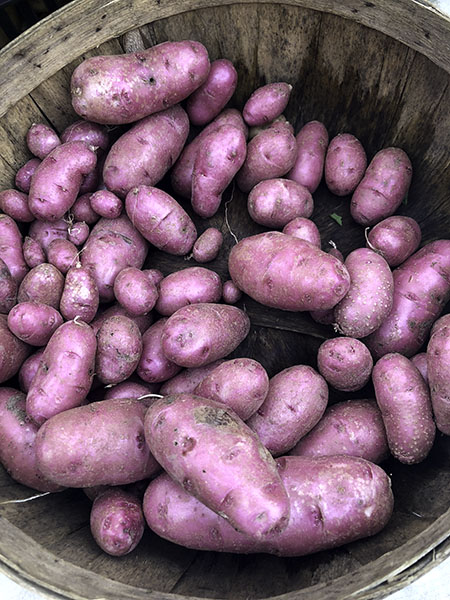
- twelve ounces of small red thumb fingerlings from Willow Wisp Farm, halved lengthwise, tossed with a little olive oil, sea salt, freshly-ground black pepper, a pinch of Robusto Smoked Salt from The Filling Station in the Chelsea Market, fresh winter savory leaves from Keith’s Farm, a small amount of crushed home-dried habanada pepper, arranged cut side down on a large Pampered Chef unglazed ceramic pan, roasted at about 375º for 20 minutes or so, tossed around on the pan, arranged on the plates and sprinkled with chopped parsley from Keith’s Farm
- the wine was a Portugal (Dao) white, Casa de Mouraz, Dao Blanco ‘Encruzado’ 2016, from Flatiron Wines


